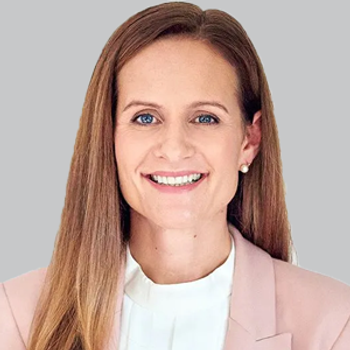
Addressing Unmet Needs in Narcolepsy Management: Practical Insight for Community-Based Physicians
Closing out his discussion on narcolepsy management, Chris Winter, MD, highlights current unmet needs and shares practical advice for community physicians.
Episodes in this series

Transcript:
Chris Winter, MD:For individuals who have narcolepsy, challenge No. 1 is finding them. As I said, patients with narcolepsy wait 10 to 15 years on average to get diagnosed. Challenge No. 1 is getting good information out there to primary care doctors, parents, teachers, school administrators, and school nurses about what narcolepsy looks like and how can we better identify it. In other words, if a child always falls asleep during world history class, maybe punishing them isn’t what we need to do. Rather, ask some questions, and don’t automatically assume it’s because the kid is staying up too late playing video games. The same thing could be said for employers. If you’ve got an individual who’s falling asleep a lot at work, rather than firing them or blaming them for some personality fault, sit down with them and say, “Listen, your coworkers say you’re falling asleep at your computer every day. Is everything OK? What’s going on?” Point them in the direction of a resource that could help them.
Once individuals are diagnosed, they’re not out of the woods because it’s been estimated that the majority of sleep doctors don’t even feel comfortable diagnosing or treating narcolepsy, which is something we find in our clinic all the time. Patients with flagrantly positive testing for narcolepsy get ignored or diminished, either because the doctor isn’t interested in treating or the doctor isn’t sure what’s going on.
We mentioned the misdiagnosis, and that’s a big problem too. It’s just a matter of spending the time with the patient to figure out what medication or medication combination is going to work best. That does take some effort, enthusiasm, and time, but from my personal viewpoint, there’s nothing more satisfying than discovering and diagnosing a patient with narcolepsy and getting them the wakefulness they need to lead a much more fulfilled and happy life. These are some of the most appreciative patients in my clinic.
My advice for community-based providers who treat narcolepsy, is, No. 1, to always perform some sleepiness evaluation on every patient, every time they come, even a patient who’s already been diagnosed with narcolepsy. Patients with narcolepsy are not great at describing their symptoms, so they tend to underestimate and minimize their symptoms. You’re saying, “I gave you drug X for your narcolepsy. How’s it going?” “I’m great, Doc. Thank you so much. Oh my God, it’s been life-changing.” And you do the Epworth [Sleepiness Scale] and realize, “Wow, they’re still extremely sleepy.” Never trust a patient who has narcolepsy’s ability to determine whether they’re normal. They’re good at telling you they’re better or worse, but their great day may be your worst day. Thus, it’s very important for us to always screen for excessive sleepiness in all our patients. That Epworth does a great job of it. You can have little Epworths on their patient paperwork when they sit down in their room to fill out their name and address and their allergies and whatnot, just have them do the Epworth and take a look at it. You’ll discover a lot of people that way. That’s important.
No. 2, don’t automatically assume that 1 medication is going to do the trick, even if a patient is feeling better. That Epworth can help guide you there. All medications that we use to treat narcolepsy have a role with a patient, so if you’re a provider who said, “You know what, I only use drugs A and B for narcolepsy—drugs C, D, E, and F I don’t even bother with,” then you’re probably making a bad choice. Drugs C, D, E, and F may not be perfect for everyone, but for individuals who treat a lot of narcolepsy, we find that every 1 of these medications is meaningful and helpful to somebody. That’s really important. If you’re a doctor who’s not interested in treating narcolepsy, that’s OK. Just make sure there’s a provider in your community that you can send those patients to so you don’t become a dead end.
The way we encourage community-based providers to interact with us and the diagnosis of narcolepsy is to do the best job for our patients. If you as a community provider send me a patient you suspect might have narcolepsy, I love it when it says on the referral form, “I’m concerned about narcolepsy,” and it has nothing to do with narcolepsy. It was restless leg, or it was a person staying up too late playing video games. I don’t care. I’m thrilled when that provider is thinking about narcolepsy. I don’t need you to be right or wrong. I’m sure I would be wrong 90% of the time if I was trying to figure out if a pregnant woman had eclampsia. It’s not my wheelhouse, but I’m thinking about it because I’ve heard about eclampsia and don’t want that to happen. I don’t care if you know a lot or a little bit about narcolepsy, just have it in your differential diagnosis for an adult or a child who seems fatigued, lethargic, or sleepy.
The way we encourage that interaction is that when we get that patient, we’re going to take the best care of them and work hard to diagnose them properly and treat them effectively. Thus, when they return to that community provider and that community provider sees that their referral has changed that patient’s life, that alone creates that strong cycle of communication and referral between providers. I look at the community I practice in, and we get a lot of referrals for narcolepsy. It’s because when you identify these people and treat them, there are not many disorders I see, particularly as a neurologist, in which we can make a bigger difference in a patient’s life, both immediately and all through their future then by treating a condition like narcolepsy. Thus, everybody feels good: The patient feels good. I feel good. That provider feels good because it was her referral that changed her patient’s life. You don’t need to be the expert. Just make sure you have a way of communicating with an expert in your community.
Transcript edited for clarity.
Newsletter
Keep your finger on the pulse of neurology—subscribe to NeurologyLive for expert interviews, new data, and breakthrough treatment updates.








































